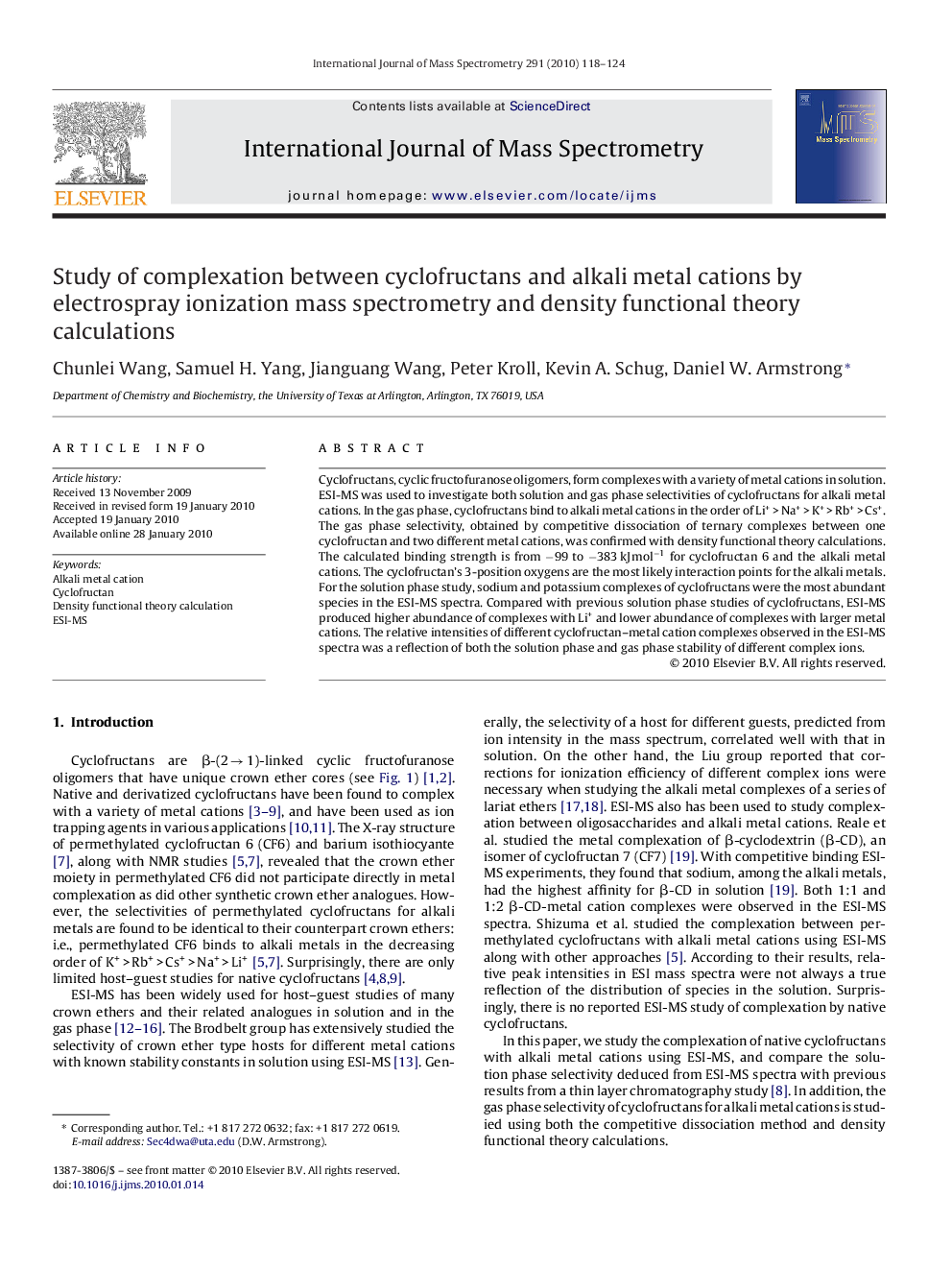| Article ID | Journal | Published Year | Pages | File Type |
|---|---|---|---|---|
| 1193586 | International Journal of Mass Spectrometry | 2010 | 7 Pages |
Cyclofructans, cyclic fructofuranose oligomers, form complexes with a variety of metal cations in solution. ESI-MS was used to investigate both solution and gas phase selectivities of cyclofructans for alkali metal cations. In the gas phase, cyclofructans bind to alkali metal cations in the order of Li+ > Na+ > K+ > Rb+ > Cs+. The gas phase selectivity, obtained by competitive dissociation of ternary complexes between one cyclofructan and two different metal cations, was confirmed with density functional theory calculations. The calculated binding strength is from −99 to −383 kJ mol−1 for cyclofructan 6 and the alkali metal cations. The cyclofructan's 3-position oxygens are the most likely interaction points for the alkali metals. For the solution phase study, sodium and potassium complexes of cyclofructans were the most abundant species in the ESI-MS spectra. Compared with previous solution phase studies of cyclofructans, ESI-MS produced higher abundance of complexes with Li+ and lower abundance of complexes with larger metal cations. The relative intensities of different cyclofructan–metal cation complexes observed in the ESI-MS spectra was a reflection of both the solution phase and gas phase stability of different complex ions.
Graphical abstractWe study the solution and gas phase selectivity of cyclofructan for alkali metal cations by ESI-MS and DFT calculations.Figure optionsDownload full-size imageDownload high-quality image (114 K)Download as PowerPoint slide
